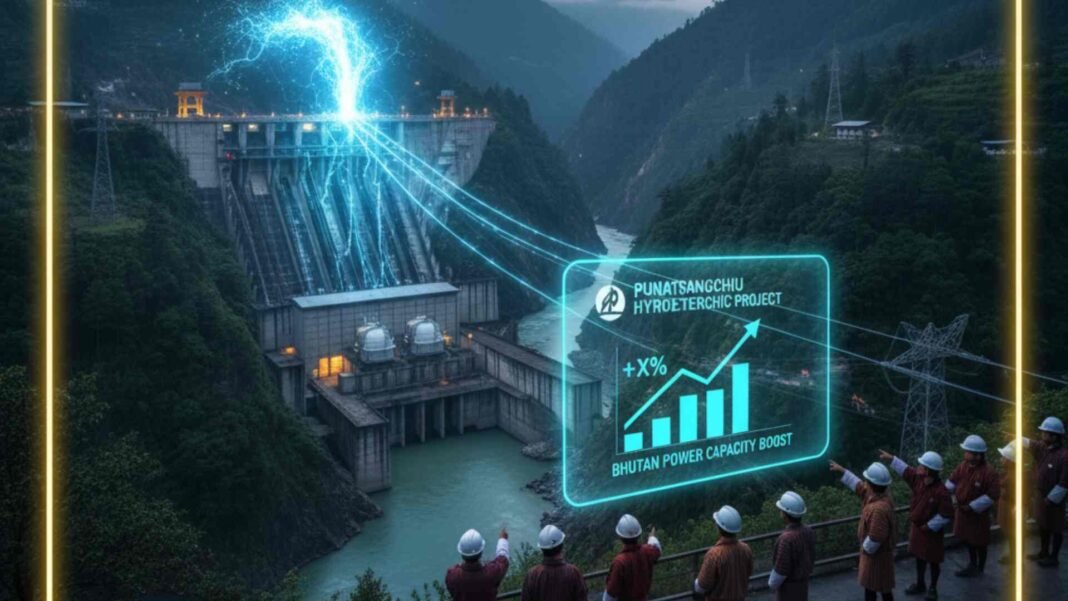The Punatsangchuu Hydroelectric Project, officially known as Punatsangchhu-II, has increased Bhutan’s power generation capacity by 40%. Inaugurated in 2025 by Prime Minister Narendra Modi and Bhutan’s King Jigme Khesar Namgyel Wangchuck, the project reflects strong India-Bhutan energy cooperation.
Project details and structure
Situated on the Punatsangchhu River in Bhutan’s Wangdue Phodrang district, the project is a run-of-the-river hydropower plant with an installed capacity of 1020 MW. It features a concrete gravity dam 91 meters tall and 224 meters long, with seven gates managing water flow. The dam feeds water through a 877-meter-long tunnel of 12 meters diameter to an underground powerhouse 15 kilometers downstream.
Powerhouse and capacity
The underground powerhouse houses six Francis turbines, each generating 170 MW. These turbines operate under a high water pressure head of 241 meters, maximizing electricity output. The project generates approximately 4,357 gigawatt-hours annually, supplying electricity domestically and to India, contributing significantly to Bhutan’s economy.
Funding and significance
India fully funded the project at a cost of about Rs 37,778 million, with 30% as a grant and 70% as a loan at 10% interest annually. The project’s run-of-the-river technology minimizes environmental impact and displacement, aligning with clean energy goals of both countries.
Environmental and strategic impact
The project impacted about 300 hectares of forest land, but the team implemented compensatory afforestation covering 600 hectares in neighboring districts. Strict environmental controls were enforced, including dust management, emission monitoring, and rehabilitation of construction sites. As a run-of-the-river facility, it avoids large reservoirs, ensuring sustainable energy development with minimal social and ecological disruption. It supports India and Bhutan’s commitments under the 2024 Joint Vision Document for cleaner and sustainable energy cooperation.
The Punatsangchuu Hydroelectric Project stands as a landmark achievement in increasing Bhutan’s power capacity and strengthens regional energy security while showcasing effective bilateral cooperation in renewable energy.






